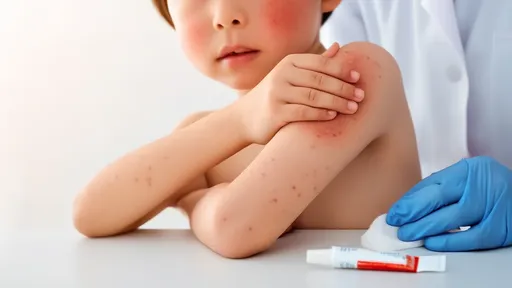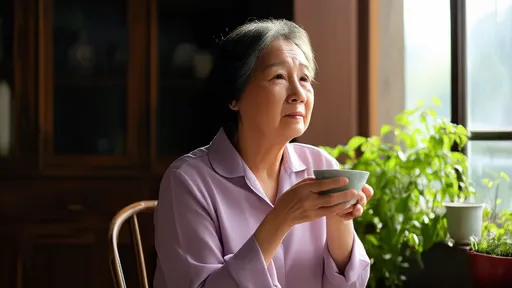For parents, few things are more distressing than watching their child struggle with allergic reactions. The rise in childhood allergies over the past few decades has become a significant public health concern, affecting millions of families worldwide. Unlike temporary illnesses, allergies often represent a lifelong challenge that requires constant vigilance and adaptation. The journey of raising an allergic child involves navigating a complex landscape of medical, social, and emotional considerations that most families never anticipate facing.
The immune system of an allergic child mistakenly identifies harmless substances as dangerous invaders, launching an unnecessary defense that causes uncomfortable or even life-threatening symptoms. Common triggers include everyday foods like peanuts, milk, and eggs, environmental factors such as pollen or pet dander, and materials like latex or certain metals. What makes these allergies particularly challenging is their unpredictability—a substance that caused mild irritation one day might trigger a severe reaction the next, keeping both children and their caregivers in a state of heightened awareness.
Diagnosing childhood allergies often begins with careful observation by parents who notice recurring symptoms after exposure to specific triggers. These might include skin reactions like hives or eczema, respiratory issues such as wheezing or nasal congestion, digestive problems, or in severe cases, anaphylaxis—a rapid-onset reaction that can impair breathing and cause a dramatic drop in blood pressure. Pediatric allergists employ various testing methods, from skin prick tests to blood work, to identify specific allergens and determine the appropriate course of management.
Living with allergies affects nearly every aspect of a child's daily routine. Mealtimes become exercises in caution, with parents scrutinizing ingredient labels and preparing separate meals when necessary. School environments present additional challenges, requiring coordination with teachers and staff to ensure classrooms remain safe spaces. Social situations like birthday parties or playdates, typically carefree events for most children, transform into potential minefields where a single bite of the wrong food could have serious consequences.
The emotional toll on allergic children frequently goes unrecognized but can be profound. Many develop anxiety about food or environmental exposures, while others struggle with feelings of isolation when they can't participate in activities their peers enjoy. Younger children may not fully understand why certain restrictions apply to them but not to others, leading to frustration or rebellious behavior. Parents often walk an emotional tightrope—trying to protect their child without instilling excessive fear or limiting their experiences unnecessarily.
Management strategies for childhood allergies have evolved significantly in recent years. While complete avoidance of allergens remains the primary approach for many cases, emerging therapies like oral immunotherapy show promise in gradually desensitizing children to certain food allergens. Epinephrine auto-injectors have become lifesaving tools for families, providing critical treatment during accidental exposures. Technological advances have also helped, with mobile apps that scan product barcodes for allergens and wearable devices that can alert caregivers to potential reactions.
Creating supportive communities has proven essential for families navigating childhood allergies. Parent support groups provide spaces to share practical tips and emotional encouragement. Schools increasingly implement allergy-aware policies, and restaurants now commonly offer allergen information. These societal changes reflect growing awareness, though many families still encounter skepticism or lack of understanding about the seriousness of allergic conditions.
Research continues to investigate why allergy rates have risen so dramatically in developed nations. The hygiene hypothesis—which suggests that reduced exposure to microbes in early childhood may lead to improperly trained immune systems—remains a leading theory, though not the only one being explored. Other potential factors include changes in diet, environmental pollutants, vitamin D deficiency, and even the timing of food introductions during infancy. As scientists work to unravel these complex interactions, families await answers that might lead to more effective prevention strategies.
Looking toward the future, the landscape of childhood allergy management appears poised for transformation. Advances in genetic research may help identify at-risk children earlier, while improved diagnostic tools could provide more accurate assessments of individual sensitivities. Novel treatments currently in development aim to modify the immune system's response rather than merely avoiding triggers or treating symptoms. For now, families managing childhood allergies continue their daily vigilance, armed with growing resources and the hope that each new day brings science closer to solutions.

By /Aug 15, 2025

By /Aug 15, 2025

By /Aug 15, 2025

By /Aug 15, 2025

By /Aug 15, 2025

By /Aug 15, 2025

By /Aug 15, 2025

By /Aug 15, 2025

By /Aug 15, 2025

By /Aug 15, 2025

By /Aug 15, 2025

By /Aug 15, 2025

By /Aug 15, 2025

By /Aug 15, 2025

By /Aug 15, 2025

By /Aug 15, 2025

By /Aug 15, 2025

By /Aug 15, 2025

By /Aug 15, 2025

By /Aug 15, 2025